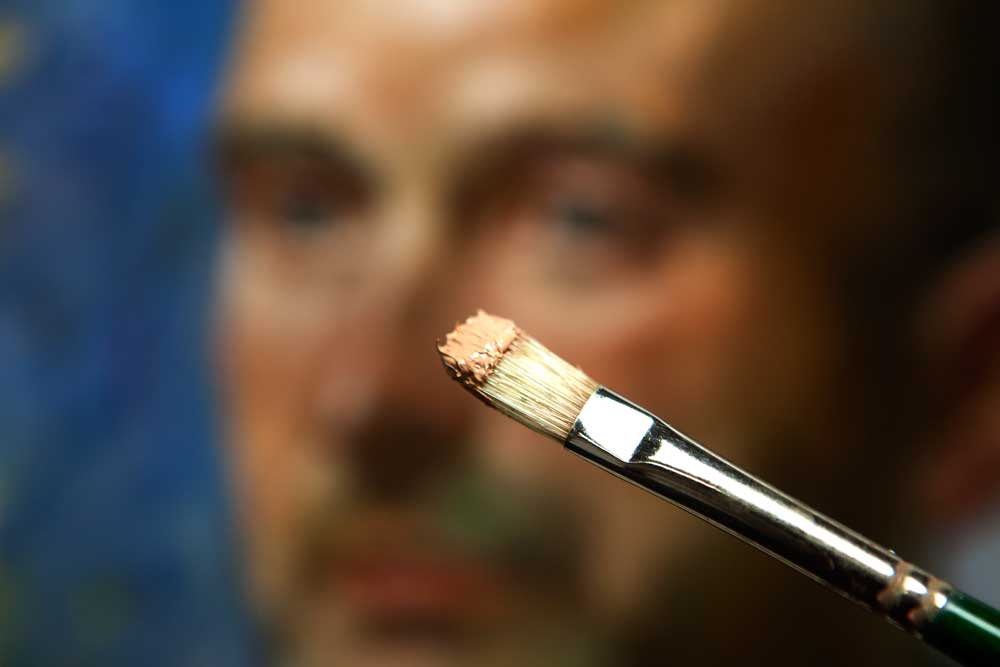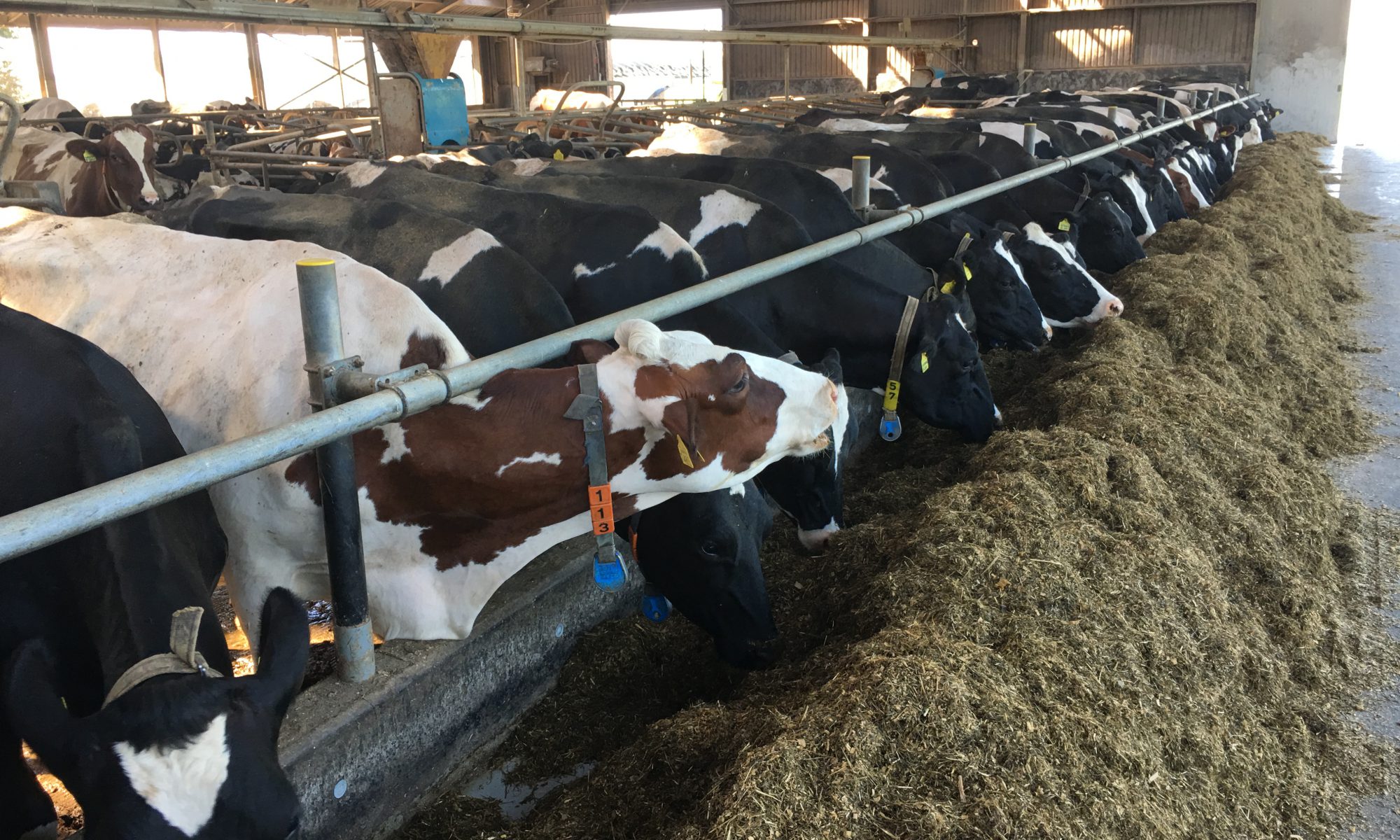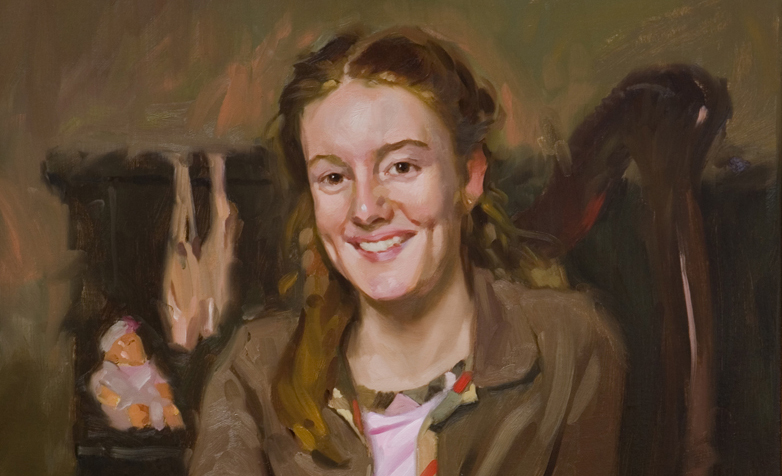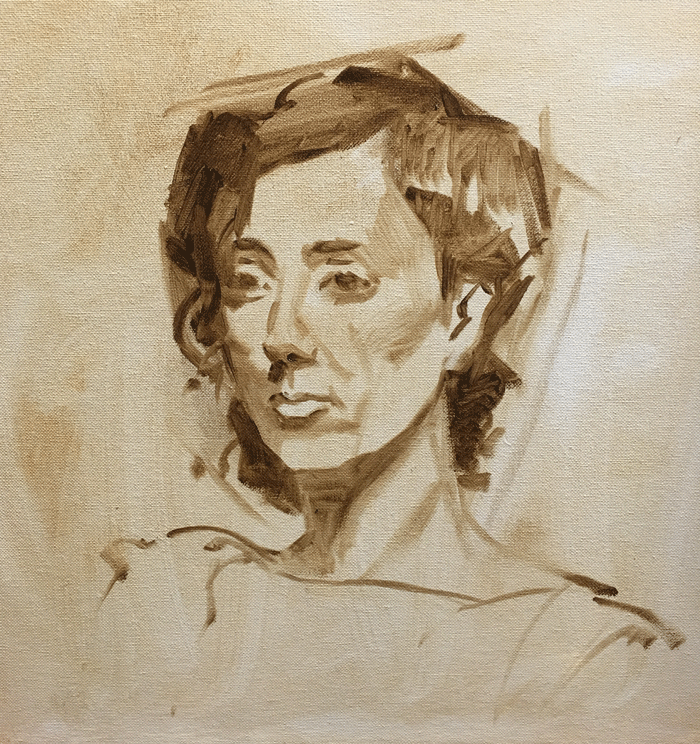Carpentry for portrait painting. As I get the opportunity I love to do craftwork, preferably in wood. I always wanted to be a carpenter, I have written about this before. And I’ll confess something else to you. For a long time, carpentry gave me more pleasure than painting. Believe me. Continue reading “Carpentry for portrait painting”
Portrait painters: use more paint!
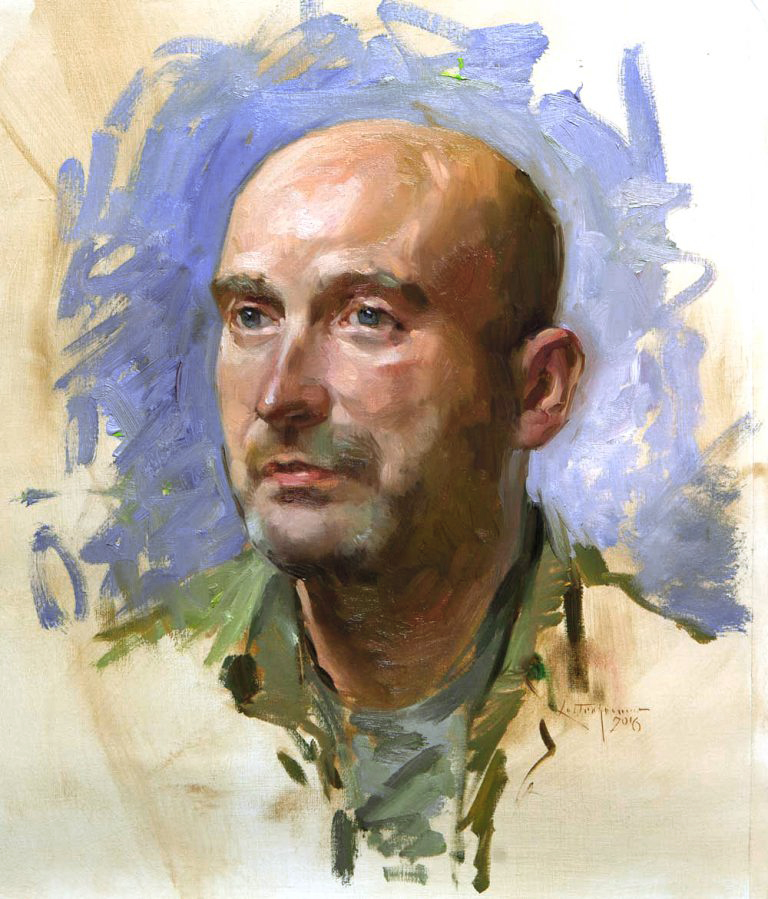
Use more paint. Paint with paint; without paint you can´t paint!
When I worked this week on a quick sketch of this portrait, again it came to mind how often I see students paint almost without any paint on the canvas. Far too thin and almost transparent. Continue reading “Portrait painters: use more paint!”
Portrait painter at the farm
Portrait painting and farming. Are there similarities? No. Although … I am a portrait painter and I married a farmer’s daughter. So: Portrait painter at the farm Continue reading “Portrait painter at the farm”
Strange stories
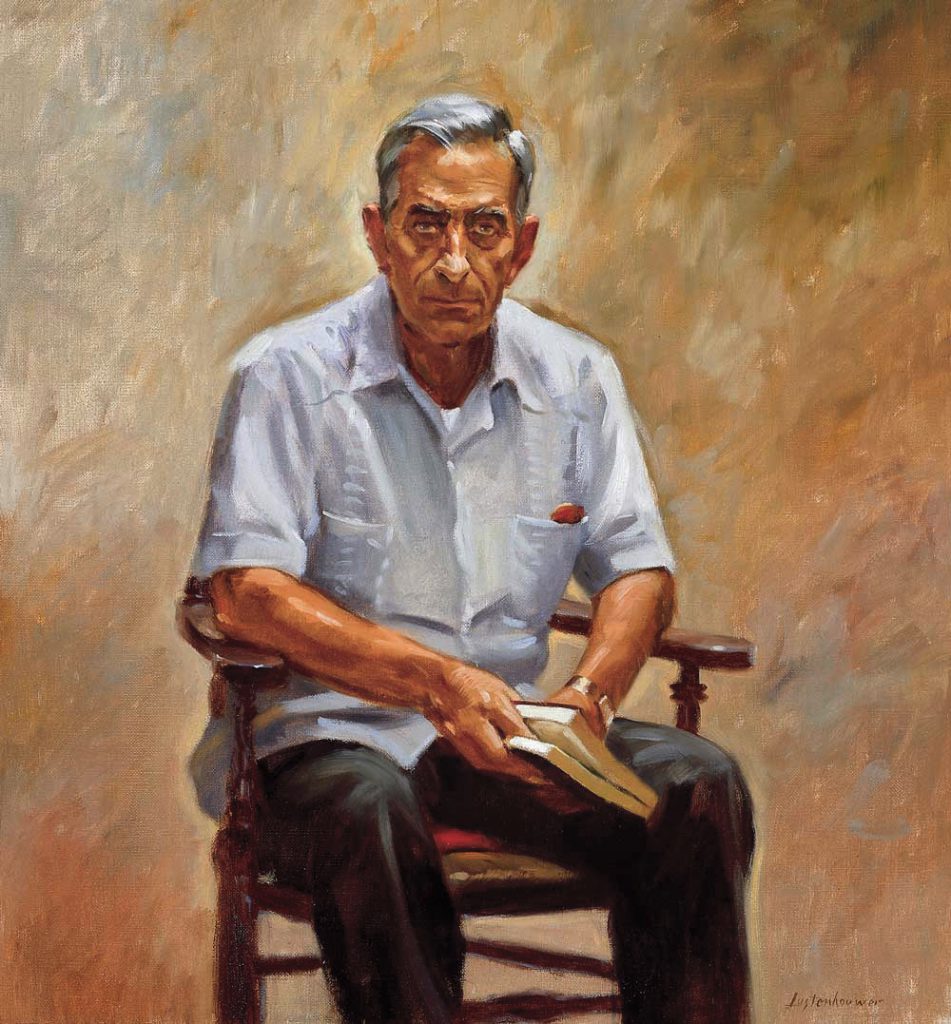
More than fifteen years ago, I sent this portrait as an entry for the Royal Institute of Oil Painters´ annual exhibition in London. I delivered the canvas myself at the Mall Galleries. Continue reading “Strange stories”
Detailed or blurry
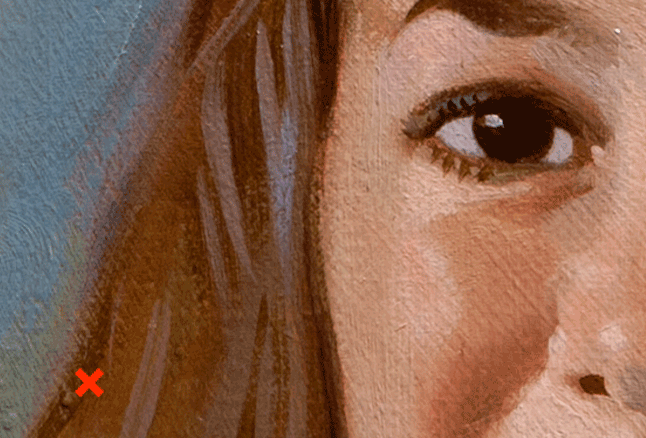
Portrait painting from photography has pros and cons. One of the major drawbacks is the inclination to copy all the details. Detailed or blurry?Apparently every wrinkle, eyelash and hair lock must be displayed faithfully. But a good portrait is not a sum of all observable details. I have said it last week: It’s not about whether it just seems real, the point is that it is true and authentic.
In his book Alla Prima ll Richard Schmid says:” In my view, detail for its own sake is a shallow goal, because I don´t think art is about how much stuff I can depict” Continue reading “Detailed or blurry”
Work from observation, the power of perception
Portrait painting from observation
You know I’m far from being an opponent of working from photography. I have received my share of criticism for this stance. That is fine by me. I know whereof I speak, take it from me. Many of my colleagues use photography. And lots for 100% of their work. Only: they do not want to talk about it! I know this phenomenon from the inside out, and I remain to tell you the truth.
But without prejudice I encourage everyone to study from observation. One of the special features is the reflection of a quest. All the elements of a face are not always immediately in the right place on the canvas. And I like to see these little changes of detail in the work. It gives the final artwork that unique charm.
When I work from a live model, I should actually take many more pictures in between to show that process well. The accompanying picture shows two shots. One after a session of 20 minutes and the other after an hour. Pay special attention to the small changes around the mouth and the eyes.
Of course it is an added problem when a model cannot sit still for more than five minutes, at least I can´t. ( I am always happy to be the painter and not the sitter) Every model tends to drift or have difficulties to hold one position. That is why I always take some pictures with my cellphone before stopping the session. So afterwards I am able to correct some features when the model had gone.

Canvas and preparations
Canvas and preparations. The word canvas means a fabric used as a painting surface. Sometimes the canvas is made from cotton fibers and other times from linen fibers. Panel is nowadays almost always made of masonite or fiber board.
Whatever you use, the big secret is in the preparation.
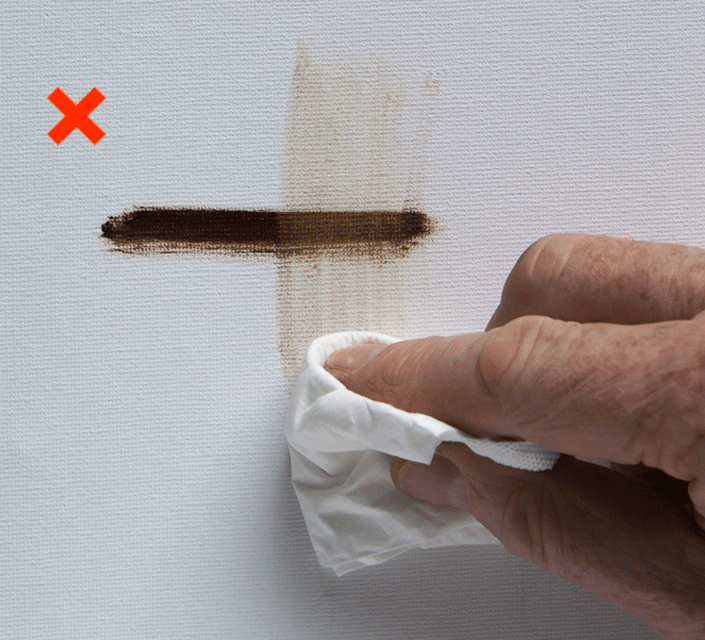
Poorly prepared panel or canvas is lethal. Often this trashy quality is the reason, a novice in oil painting gives up after a few attempts. Flimsy linen absorbs immediately every brushstroke. Continue reading “Canvas and preparations”
Portrait painting with an egg timer.
Portrait painting with an egg timer.
Beside my palette is an egg timer. I set it to 25 minutes. For that time, I paint. Then I take a 5 minute break and then set the alarm again for another twenty-five minutes.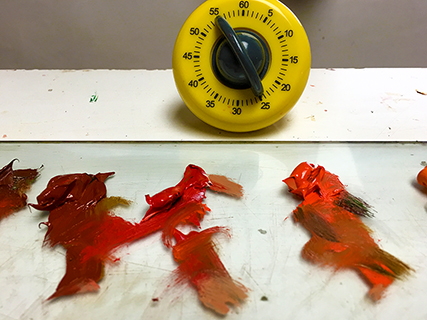
How did I come up with that idea? Not on my own. A few weeks ago I read an article about the Pomodoro Technique. I looked it up on the Internet and I was amazed at the amount of information. I immersed myself in it and decided to try this. And I can tell you IT WORKS! Continue reading “Portrait painting with an egg timer.”
About photography
Ten common mistakes in portrait painting.
This is the first of a series of 10 blog-posts, in which I will discuss ten of the most common pitfalls in portrait painting. I will publish every fortnight on each topic. Continue reading “About photography”
Contact with the model and photography.
“Painting a portrait is not just painting a picture, it is a celebration of the person.”
Long time ago I read this statement and I decided to make it my motto. When I started this blog I had in mind to explain what is involved in painting a portrait.Not only about painting techniques but also about inspiration and motivation, concentration and preparation. In another way: to explain my motto.
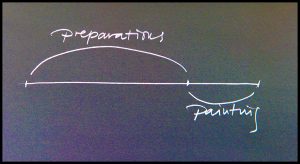 I am convinced that two thirds of making a portrait is in the preparation and only one third covers painting the portrait itself. Today I want to tell you about the most important part of the preparation:
I am convinced that two thirds of making a portrait is in the preparation and only one third covers painting the portrait itself. Today I want to tell you about the most important part of the preparation:
The contact with the model and photography.
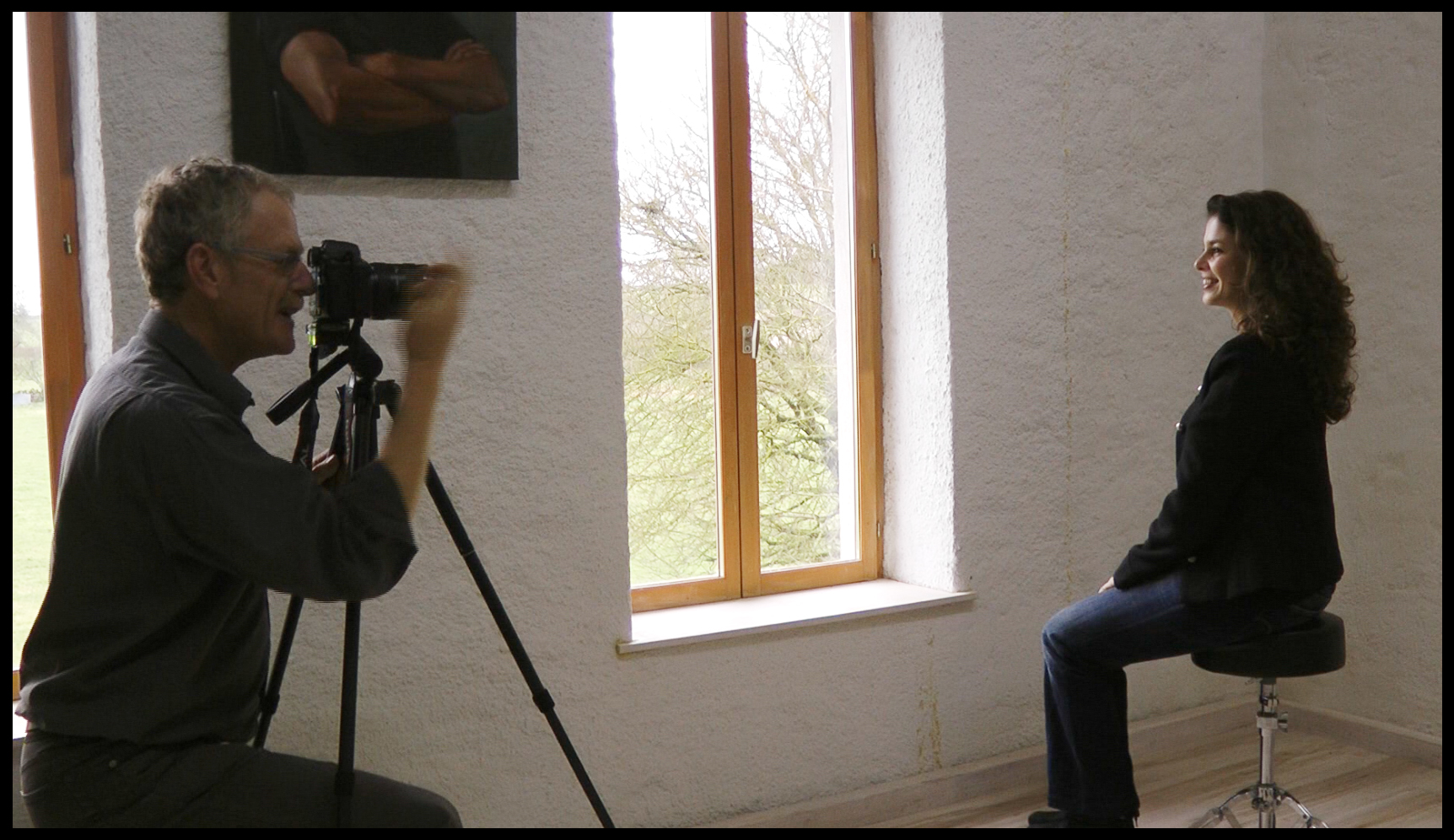
The last two weeks I was out on a number of portrait commissions. I went to visit people I have never met in my life met. People that expect from me to make them a nice portrait. To me that is a known and usual course of business. However for most people this is very special and they do this only once in their lives. Sometimes they are tense but always expectant. Most people are not accustomed to pose and some doubt whether they will do it right. It is my job to give the model confidence. Confidence in the good outcome, trust that he or she will be imaged favorably. People who are too modest, I might have to encourage, people with a big ego I try to temper. Noisy kids I try to calm and I try to provoke shy kids. But I need to have good eye for their unique caracter and I must not overpower this.
Photo sessions are so delicate that I always try to have an appointment the day before. A visit without cameras. In advance I will get an idea of the sitter. And what is more important, the model will get an impression of who I am. The sitter has to give me something that I can give back in the portrait. And that has everything to do with trust and harmony. I see it as my job to be a faithful reporter of these important characteristics.
See also: Portrait painting lessons (1)


